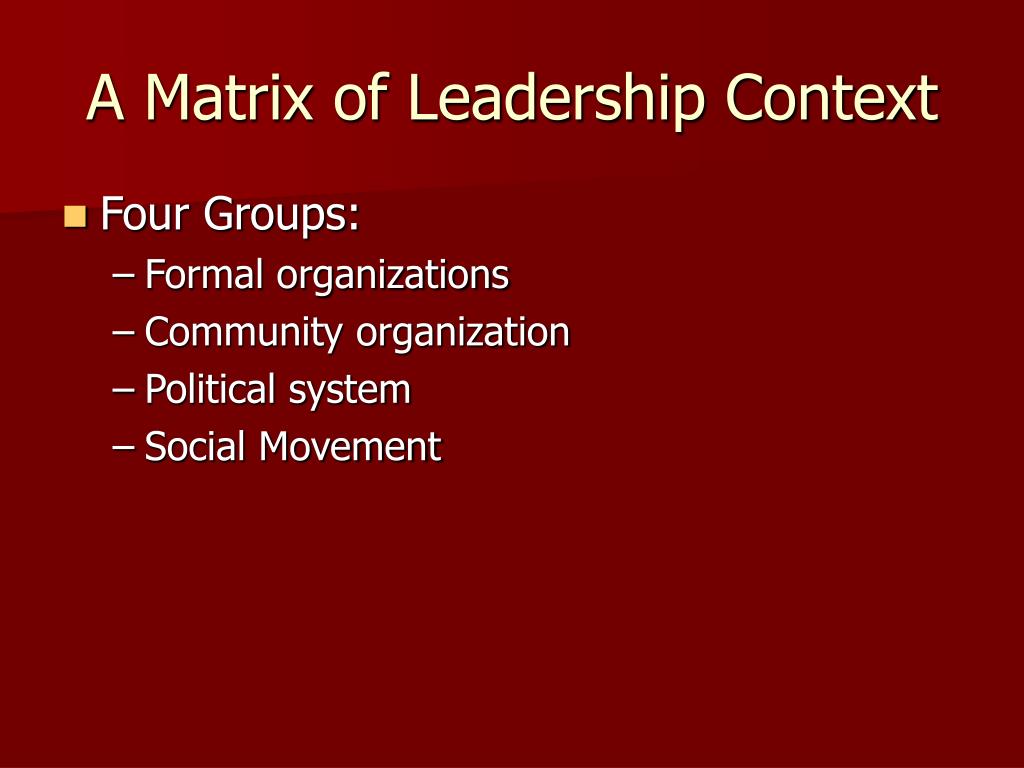
The one-to-one context is like dancing with the person you’re talking to. This will build both your own one-to-one leadership and the other person’s self-leadership. Have focused one-to-one conversations, discuss goals, give feedback and recognition, and establish trust. When you’re working in this context, you must focus your efforts and actions on teaching, encouraging, guiding, and supporting the person you’re talking to. When you’re talking to a coworker, are you thinking about how the conversation can help them become better in their role? Or are you thinking about ending the conversation as quickly as possible so you can get back to your own work? Prioritizing the former over the latter is the distinguishing mark of someone who leads in the one-to-one context.
#Leadership contexts how to
Whichever you choose, know how to turn the situation into something that benefits your leadership ability. The key is knowing when to choose one approach over the other. Do it in a way that helps yourself and the organization grow and improve over time.Self-leadership requires balance between pushing yourself to be the best for yourself and pushing yourself to be the best for your team.Īs a self-leader, you’ll have three choices any time you tackle a task or project: To develop your self-leadership, you have to take into account not only what you’re doing and what you need, but also what your organization needs from you. If they see what you’re doing is working, they will pursue the same level of excellence. If you can influence yourself to get out of bed in the morning and get a project done at work, you’re already on your way to becoming an expert in this context.īecoming a successful self-leader not only boosts your own performance, but it can also inspire the people around you to become better leaders of themselves. Leading yourself is one of the most overlooked and underappreciated leadership contexts. Your success in any situation depends on understand the context and what it calls for. Sometimes you have to lead a big partnership to benefit your organization (alliance).


Some days you have to lead a team (team), while others you have to head up an all-unit meeting (organizational). Sometimes you have to lead yourself through a project (self). Other times, you’ll have a one-to-one conversation with someone you lead (one-to-one). You are most likely not in the same context during every interaction you have throughout the day. To build a foundation for great leadership, we must recognize each context and adapt our leadership methods and behaviors accordingly. There are five different leadership contexts, which can be easily remembered with the acronym “SOTOA”:

Like the great Rosetta Stone helped us break through seemingly impenetrable language barriers, the concept of “ leadership in context” could help us break through the leadership development barriers that prevent us from becoming the best leaders we can be in the workplace.īy “leadership in context,” I mean the idea that we can create a comprehensive framework of leadership styles based on the contexts in which a person must lead a team. The central principle of leadership in context is that who, what, when, and where you lead determines how you lead.


 0 kommentar(er)
0 kommentar(er)
